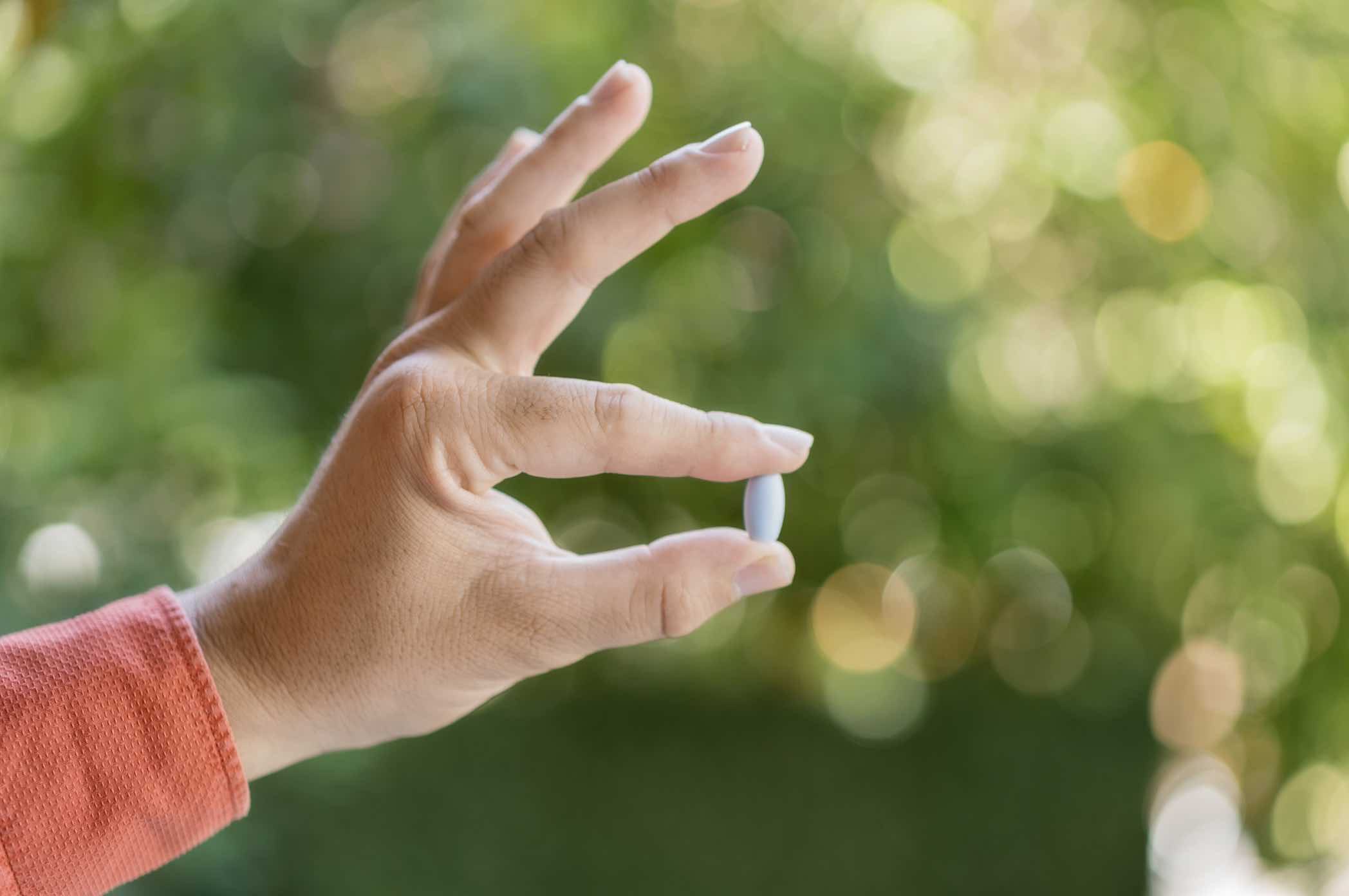Last Updated on October 11, 2023
Do you feel that your drinking habits need to change?
You know your drinking patterns aren’t unhealthy or risky enough to warrant professional help. But you have a nagging suspicion that you drink more than you should.
You also often worry about the current or future impact of your drinking on your mental wellness, physical health, finances, or relationships.
If so, you may be wrestling with gray area drinking.
In this article, we’ll look at the definition of gray area drinking and signs that suggest you may be a gray area drinker. We’ll also explore how you can break out of unhealthy drinking patterns.
Learn more about the various types of drinkers on the alcohol spectrum here.
What is Gray Area Drinking?
Gray area drinking refers to alcohol consumption that falls between excessive drinking and every-now-and-then drinking.
If you’re a gray area drinker, you might not notice any serious warning signs about your drinking habits. You don’t wake up with a splitting headache each day. Nor has your drinking landed you into trouble with the law or your employers.
Quite the opposite, your alcohol consumption might very well fall into the category of moderate drinking—which is defined as having two or fewer drinks in a day for men or one or fewer drinks in a day for women [1].
But here’s the catch. While moderate drinking is considered lower risk, it can still be problematic for some people. For example, some individuals may find that one drink is all it takes for a hangover to strike the following morning. That’s because alcohol affects different people in different ways.
Thus, there is no hard-and-fast cut-off point that defines gray area drinking. It’s the level of drinking that personally causes issues or concerns, though not life-altering, in any area of your life.
Signs You May Be a Gray Area Drinker
Here are some signs to help you tell whether you’re a gray area drinker.
1. Your Drinking Habits Don’t Seem Problematic to Others
On the surface, you look like you have a grip on your drinking. You don’t have any friends or family members coming up to you and sharing their concerns about how much you drink. In fact, some may even encourage you to live life a little bit more instead of worrying about your alcohol consumption.
2. You Secretly Worry about Your Alcohol Intake
While your drinking habits aren’t enough to ring the alarm bells of those around you, they don’t slip past your internal radar. You can’t help but worry that you’re drinking more than you should. You might regret the amount of alcohol you drank the previous night or feel anxious about how someone’s opinion of you might change once they catch on to how much you’re actually drinking.
3. You Experience Side Effects from Drinking
Your drinking leads to side effects that don’t alert or concern those around you. Maybe you wake up with a mild headache the night after drinking. Perhaps alcohol makes it harder to get restorative sleep at night, but not to the extent that it significantly affects how you function the next day.
4. You Can Reduce or Stop Drinking, But Only Temporarily
You had set yourself a goal, whether that was to lose a few extra pounds, save money, or get better sleep at night. You managed to successfully stop or cut back on alcohol and, perhaps, even achieved those wellness goals. But it was difficult to maintain this success. Maybe a wedding, celebration, or office party got you excited about drinking again, which caused you to spiral back into your initial drinking patterns.
5. Certain Drinking Triggers Can Make It Harder to Resist Alcohol
Resisting alcohol can be a challenge. Certain triggers, whether it’s a social event, your favorite restaurant, or hanging out with a specific group of friends, can ignite that craving to drink, even if you didn’t initially plan to. When these drinking triggers hit, the goals and limits you’ve set for yourself tend to fly out the window.
6. You Constantly Struggle with Conflicting Thoughts
There’s a constant tug-of-war in your head between sticking to your limits and caving into your cravings. There’s always a voice in your head telling you to “live life in the moment” and “just have one more drink.” And this often beckons you to drink more than planned.
Effects of Gray Area Drinking
Gray area drinking might not significantly affect your daily life. However, you may still notice the following undesirable outcomes:
- Poorer focus and performance at work [2]
- Lower-quality sleep [3]
- Alcohol-induced hangovers
- Physical side effects, including nausea and headaches
- Poor mood and high irritability
- Difficulty losing weight or maintaining a healthy weight
Some gray area drinkers might not notice any direct or obvious problems resulting from their alcohol intake. However, this does not guarantee that their drinking habits are harmless or healthy.
How to Manage Gray Area Drinking
There are various tips and tricks that can help you curb your alcohol intake and regain control over how much you drink.
Here are some strategies to take on a test drive.
Identify Your Drinking Triggers
It’s admittedly hard to say “no” to booze after a long and stressful day at work. Perhaps you’re too shy to turn down a drink when everyone else has a glass of wine in their hands.
These are different triggers that can cause you to drink when you don’t want to. It’s crucial to recognize what triggers your alcohol cravings. With this awareness, you can actively manage or minimize your exposure to your personal drinking triggers. This will make it easier to resist the urge to drink.
The following are some of the most common drinking triggers: [4]
- Stress and anxiety
- Sadness, frustration, or irritability
- To relax and unwind
- Peer pressure and social events
- Euphoria or happiness
- Boredom
Set Effective Wellness Goals
The best way to nurture long-lasting positive change is to create achievable and realistic goals that provide motivation and give you a sense of direction.
Here are some tips to get you started on goal setting:
- Have an end goal in mind. Maybe you’d like to reduce your intake from 10 drinks a week to 5 drinks a week. You can also decide whether you’d like to gradually taper down your alcohol intake from one week to the next instead of going cold turkey or making a drastic change right off the bat.
- Think about your drinking limits and how much you’d like to cut back on to achieve your goal. Decide the maximum amount of alcohol you can consume each day, which days you’re allowed to drink, and if there will be any specific cut-off time for drinking in the evening.
- Write your action plan and end goals down. This can help your goals feel more real and tangible rather than just a daydream conjured up in your mind. You can also keep your goals and drinking limits somewhere visible around your home to remind you of what you’ve committed to. For example, having your written goals placed on the fridge door can be a good reminder each time you reach for a cold beer.
Track Your Drinking
The best way to tell whether you’re staying within your drinking limits is by tracking how much you drink. This means you’ll take note of how much and when you drink each time you do.
You can make notes of your drinking in a physical diary or journal. Alternatively, various drink-tracking apps can help you keep a digital log of your drinking. An app like Sunnyside can also send reminders and create personalized action plans that help you stay on track with your goals and drinking limits.
Trim your Social Circle
Social pressure is one of the most common reasons for drinking. Having someone offer you a drink or watching everyone else happily enjoying alcohol can be a massive source of pressure.
If you notice that you almost always drink when around a specific group of friends, peer pressure might be a core reason for your drinking. You could decide to hang out less with these friends or suggest alternative activities that do not involve drinking.
And if your friends choose to disrespect or disregard your decision to avoid alcohol, it may be time to give your social circle a trim.
Explore New Interests and Hobbies
Boredom is another common drinking trigger. If you have quite a bit of free time on your hands, you may notice that that’s when alcohol cravings begin to hit.
Instead of drinking to remedy restlessness or boredom, try to fill up your spare time with activities that you enjoy or find relaxing. Learning a new skill or picking up a foreign language are examples of different ways to occupy your time and mind, so you’re less likely to turn to alcohol for that buzz.
Find Strength In Community
Surrounding yourself with the right friends and community can make your journey less lonely. One way to do this is to keep yourself accountable to a few trusted friends.
Alternatively, you can look for an online community that caters to those interested in sobriety or mindful drinking. This is a great way to connect and seek advice and support from those who have walked in your shoes.
Take Part In Mindful Drinking Challenges
Mindful drinking challenges like Dry January or Sober October are a great way to reflect on and recalibrate your drinking patterns. These challenges encourage a person to explore what life will feel like with less (or no) alcohol in the picture. You can also take part in these challenges with a friend and keep each other accountable.
The Sunnyside Fix to Gray Area Drinking
Gray area drinking is tricky to tackle. Because this level of drinking doesn’t ring any obvious alarm bells, finding a tangible reason to cut back on your drinking can be harder. Apart from joining a community that supports you, defining your own drinking limits, and taking part in mindful drinking challenges, you can also leverage the power of technology to help you achieve your goals.
The Sunnyside mindful drinking app serves as a mini coach in your pocket. This app can track your drinking and send you reminders to do so. You’ll also receive daily motivation, tips, and weekly personalized action plans to achieve your goals. Additionally, you can get in touch with professional, real-life coaches through the app to receive targeted advice that will help you create healthier drinking habits that last.
References
[1] CDC. (2019). CDC – Fact Sheets- Moderate Drinking – Alcohol. Centers for Disease Control and Prevention. https://www.cdc.gov/alcohol/fact-sheets/moderate-drinking.htm
[2] Thørrisen, M. M., Bonsaksen, T., Hashemi, N., Kjeken, I., van Mechelen, W., & Aas, R. W. (2019). Association between alcohol consumption and impaired work performance (presenteeism): a systematic review. BMJ Open, 9(7), e029184. https://doi.org/10.1136/bmjopen-2019-029184
[3] Park, S. Y., Oh, M. K., Lee, B. S., Kim, H. G., Lee, W. J., Lee, J. H., Lim, J. T., & Kim, J. Y. (2015). The Effects of Alcohol on Quality of Sleep. Korean Journal of Family Medicine, 36(6), 294–299. https://doi.org/10.4082/kjfm.2015.36.6.294
[4] Ghiţă, A., Teixidor, L., Monras, M., Ortega, L., Mondon, S., Gual, A., Paredes, S. M., Villares Urgell, L., Porras-García, B., Ferrer-García, M., & Gutiérrez-Maldonado, J. (2019). Identifying Triggers of Alcohol Craving to Develop Effective Virtual Environments for Cue Exposure Therapy. Frontiers in Psychology, 10, 74. https://doi.org/10.3389/fpsyg.2019.00074




